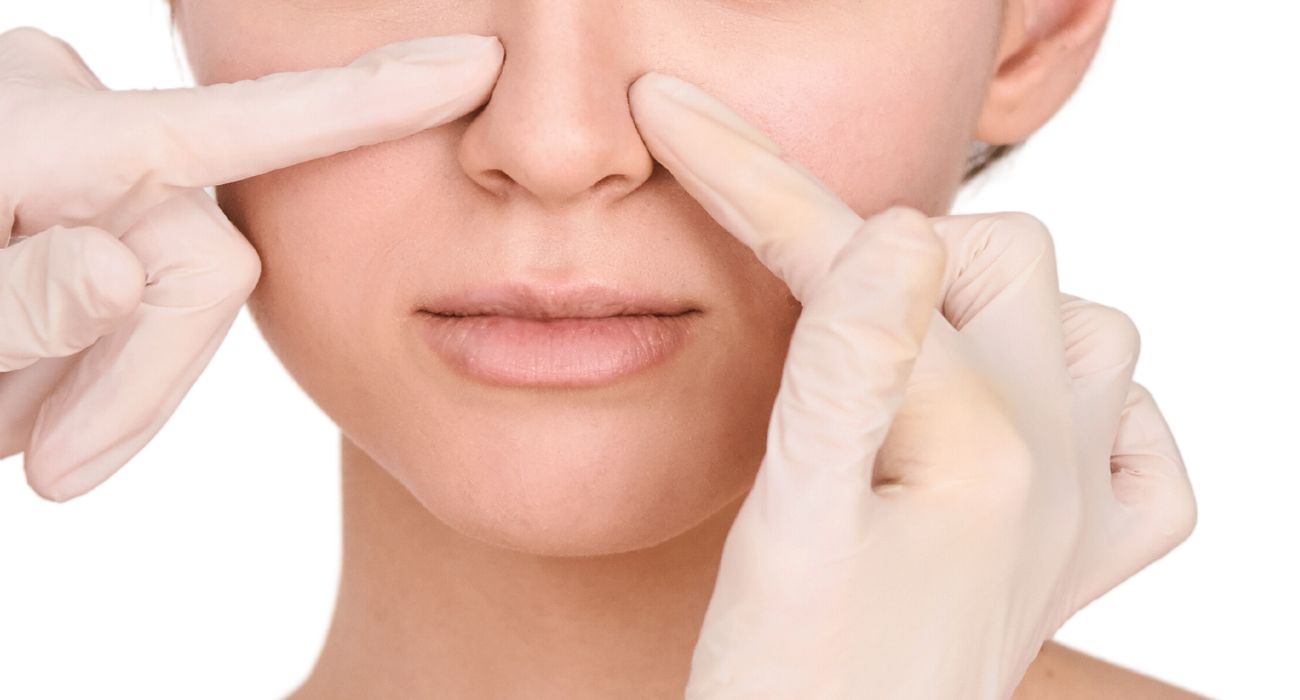Cancer of the breast cells is known as breast cancer. Breast cancer is the second most commonly occurring cancer that women are diagnosed with.
When cells in your breast grow in size and divide uncontrollably to form a mass of tissue called a tumor, you get breast cancer. Breast cancer can occur in both genders, men and women, but women are much more likely to get it.
Recognizing the Signs and Symptoms of Breast Cancer
The most common breast cancer symptom is a lump or mass, although most breast lumps are not cancerous. Breast cancer is more likely to be a painless, hard mass with irregular edges, but it can also be soft, round, tender, or even painful.
Feeling a lump or mass in your breast, experiencing a change in your breast size, and noticing changes to the skin on your breasts are all possible symptoms of breast cancer. The following are other examples of breast cancer symptoms:
- Changes to the skin over the breast, like dimpling of the skin
- A newly inverted nipple
- Signs like peeling, crusting, scaling, or flaking of the pigmented area of skin around the nipple (areola) or breast skin
- Redness or pitting of your skin over your breast, like the skin of an orange
- Enlarged lymph nodes under your arm or near the collarbone (sometimes, this can be a sign of breast cancer spreading even before the original tumor in the breast is large enough to be felt)
Blistering (non-cancerous) breast conditions can also cause many of these symptoms. From puberty to menopause, the shape, size, and composition of the breasts undergo numerous changes. Therefore, you should not be concerned about your body changing. It comes from nature.
Nevertheless, it is essential to have any new breast mass, lump, or other change examined by a skilled medical professional so that the cause can be identified and, if necessary, treated.
How to Perform a Self-Examination for Breast Cancer
Examining your breasts may appear odd at first, but incorporating it into your daily routine is essential because, as the saying goes, “Prevention is better than Cure.”
While avoiding all cancers is impossible, breast cancer can be detected. Mammograms can help detect breast cancer earlier.
Another tool for the early detection of breast cancer, breast self-examination can be performed at home.
Three Effective Methods for Examining Your Breasts
Method 1:
-
Stand naked in front of a brightly lit mirror and wrap your arms around your hips. Notice the size and shape of your two breasts.
- What you are trying to find:
- Nipple lumps or redness
- Scaling
- Larger pores
- What you are trying to find:
-
Next, press down with both hands on your hips to check for skin dents and to see if your pectoral muscles contract evenly on both sides.
-
Lift your palms together and over your head. Take note of any dimples on the skin. To check for discharge, gently pinch the nipples with your index and thumb. Some discharge from the nipple after giving birth is considered normal.
Method 2:
-
Lie with a pillow under your shoulders and one hand behind your head to check your breasts. You can use your right hand to touch your left breast and your left hand to touch your right breast.
-
From the collarbone to the entire chest, your fingers should be flattened and held together for a firm touch around the nipple, chest, and underarms. With the other breast, do the same thing.
Method 3:
-
You can check your chest while sitting or standing. While you are in the shower since soap makes it easier to move your hands over your chest, you can do this.
-
You may put your right hand behind your head and raise your right arm toward your chest. Then, examine your breast with your left hand. To reach the nipple, spiral your fingers in a circular motion from the outside to the inside of the circle. Look for any strange bumps or growths. Feel the various layers of breast tissue by applying different pressures.
-
Then, similarly, examine the left breast for any changes like a lump in the breast, red skin, an orange peel-like appearance, or a nipple dimple.
Changes in the size and shape of the breasts, discharge from the nipples, and inverted or retracted nipples all contribute to earlier detection of breast cancer and, as a result, better survival rates.
When Should You See a Doctor for Breast Concerns?
You should immediately schedule an appointment if:
- You notice skin changes in your breasts, such as redness, scabs, dimples, and wrinkles.
- You may have a bloody discharge from your nipples.
- Your nipples are facing inward, which is not normally positioned that way.
- You may feel a lump under your armpit.
If you find a lump or other change in your breast, even if a recent mammogram was normal, you should see a doctor immediately for an immediate evaluation.
Diagnostic Tests to Determine if You Have Breast Cancer
The diagnosis and treatment of breast cancer have improved due to substantial funding for research and awareness campaigns. Early detection, a personalized treatment approach, and a better understanding of the disease have all led to an increase in breast cancer survival rates and a steady decline in the deaths associated with the disease.
The following diagnostic tests will be performed to determine if you have breast cancer:
- Examining the breasts: The doctor will look for lumps or other abnormalities in the armpit, breast, and lymph nodes.
- Mammography: An x-ray of the breast is known as a mammogram. Mammograms are frequently used for breast cancer screening. The doctor may recommend and ask for a diagnostic mammogram to investigate further an abnormality discovered during a screening mammogram.
- A breast ultrasound: Images of structures deep within the body are produced using ultrasound, which uses sound waves. An ultrasound can tell if a breast lump is a solid cyst or filled with fluid.
- Biopsy: Breast cancer can only be diagnosed this way. During a biopsy, the doctor will remove a core of tissue from the suspected area with a special needle guided by her x-rays or another imaging test. A small metal marker is frequently inserted there to make it easier to identify the chest on subsequent imaging tests. Biopsy samples are analyzed to determine the types of cells involved in breast cancer, their aggressiveness (grade), and whether cancer cells carry hormone receptors or other receptors that may influence treatment options.
- Magnetic resonance imaging (MRI): Radio waves and magnets are used in an MRI machine to take pictures of the inside of the breast. You will receive a contrast agent injection before your breast MRI. Unlike other imaging procedures, MRI produces images without using radiation.
Depending on the circumstances, additional tests and procedures may be used.
Exploring Treatment Options for Early-Stage Breast Cancer
The treatment of early or locally advanced breast cancer differs for each person. Your test results, the location of the breast cancer, the stage and grade, and whether the cancer is hormone receptor and HER2 positive or triple negative will all play a role in the best course of treatment for you. Your age, general health, and desired course of treatment will all be taken into account by the doctor.
People diagnosed with breast cancer can benefit from exercising before, during, and after treatment.
Treatment Choices Based on Your Type of Breast Cancer
- Surgery
- Radiation therapy
- Chemotherapy
- Hormone therapy (only for ER+ and PR+ cancers)
- Targeted therapy (only for HER2+ cancers)
You will typically receive multiple treatments, and they may be administered in various orders or combinations.
Breast-conserving surgery with radiation therapy or a mastectomy (surgery to remove the entire breast) is the primary treatment option for early breast cancer.
Depending on the characteristics of the cancer, breast cancer surgery is frequently followed by a combination of chemo, radiation, hormone therapy, or targeted therapy. Adjuvant therapy is the treatment you receive following surgery to lower your risk of cancer recurrence.
Neoadjuvant therapy or chemotherapy is administered before surgery. It is typically recommended for hormone-positive breast cancer, triple-negative breast cancer, and inflammatory breast cancer. It is also frequently used to shrink locally advanced breast cancer.
Before surgery, you will typically receive targeted therapy if your cancer is HER+. You might be advised to get breast-conserving surgery if the chemotherapy has reduced the size of the cancer. A mastectomy may also be recommended. Depending on the type of cancer, radiation therapy, hormone therapy, or targeted therapy may follow surgery.
Breast cancer treatment relies heavily on early detection. Because of this, regular screenings for breast cancer are necessary. Don’t hesitate, get your breasts checked today!





